#Liberated Maat
Text


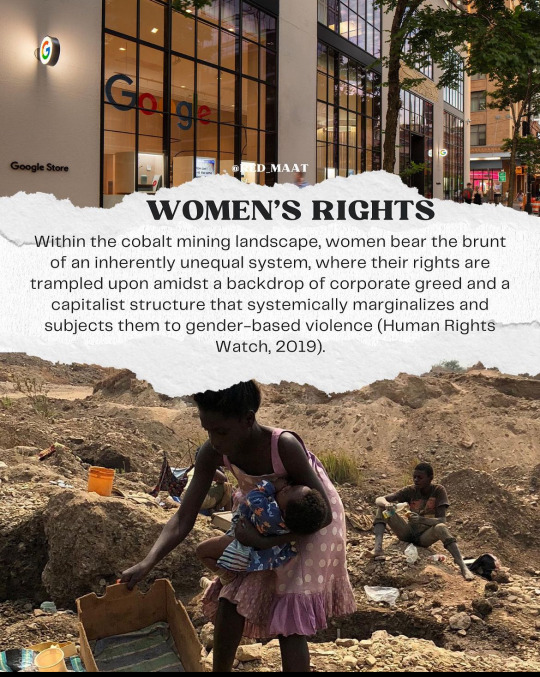



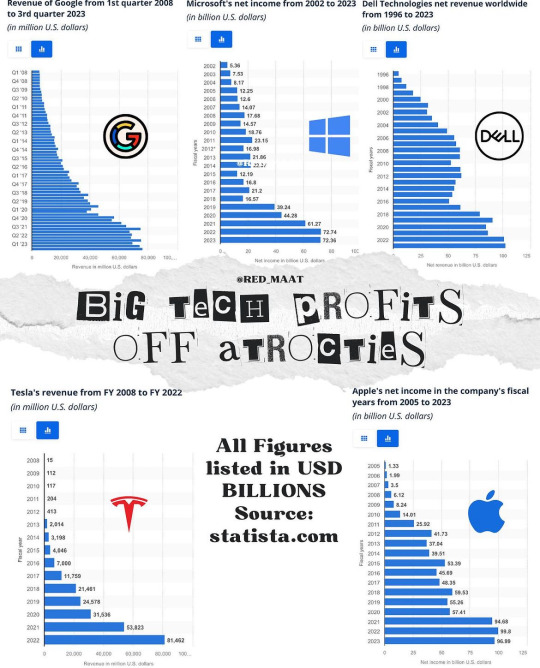
#congo#drc#signal boost#genocide#exploitation#theft#resources#child labor#crimes against humanity#modern day slavery#womens rights#black lives matter#black liberation#the cost of technology#cobalt mining#current events#colonialism#imperialism#red maat#tysir salih#Democratic Republic of the Congo#dr congo#congo kinshasa#the congo
279 notes
·
View notes
Text
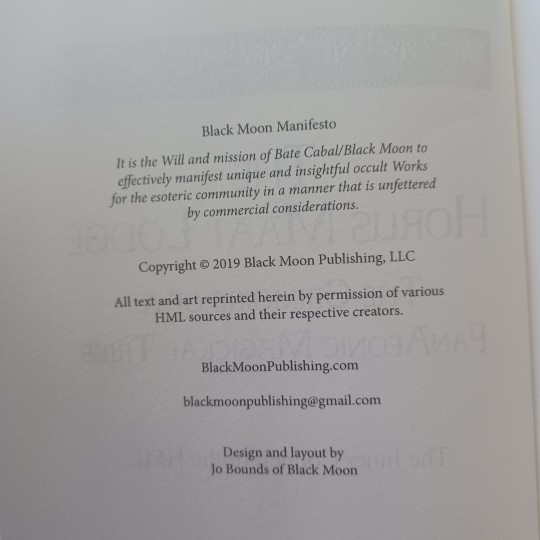



Nema, channeler of Liber Pennae Praenumbre: The Book of the Foreshadowing of the Feather;
Maat/Ipsos
0 notes
Note
I just put two and two together. The Higgins' son the priest? His name is Lindsay and he's very liberal.
Jason's sister the former nun turned mystic/spiritual teacher ? Her name is Lindsay.
A lot of characters are named after loved ones of show members! Off the top of my head (some I just assume based on the names):
Keeley Jones -> Keeley Hazell (Bex and writer)
Ms. (Leann) Bowen -> Leann Bowen (writer/producer)
Phoebe O’Sullivan -> Phoebe Walsh (Jane and writer)
Jamie Tartt -> Jamie Lee (writer)
Declan Cockburn -> Olivia (Cockburn) Wilde
Jan Maas -> Saskia Mass CEO of Boom Chicago
Sam Obisanya -> Sam Richardson (Edwin Akufo)
Jane Payne -> Jane Becker (producer)
Henry Lasso -> Henry Lawrence (co-creator Joe Lawrence's son)
Will Kitman -> William Lawrence (co-creator Joe Lawrence's son)
O’Brien, De Maat, Goodman, Kukoc are also named after family and friends or as tributes.
Bonus HC: Ms. Bowen is played by Ruth Bradley, so it keeps alive my thought of Roy’s sister being named Ruth.
#ted lasso#lindsay higgins#ted lasso character names#ask box is always open#jamiepoptartt#Keeley Jones#keeley hazell#Jamie Tartt#sam obisanya#phoebe o’sullivan#jan maas#jane payne#Henry lasso#will kitman#declan cockburn#sam richardson#ms bowen
44 notes
·
View notes
Text
Day 9

Liber Arcanorum
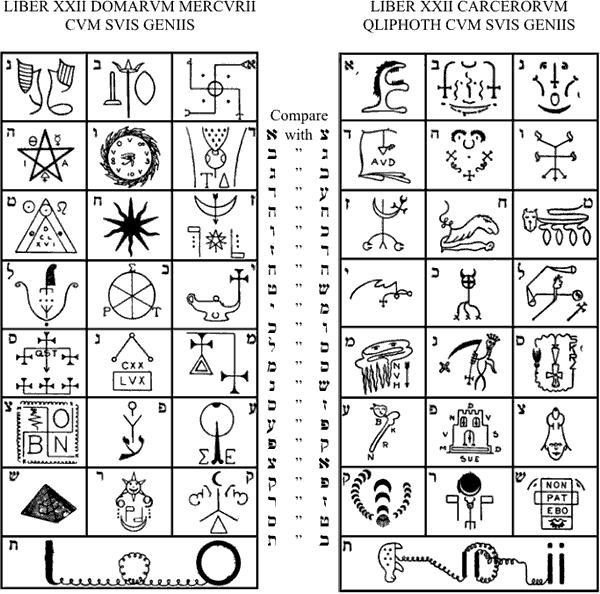
0. A, the heart of IAO, dwelleth in ecstasy in the secret place of the thunders. Between Asar and Asi he abideth in joy.
1. The lightnings increased and the Lord Tahuti stood forth. The Voice came from the Silence. Then the One ran and returned.
2. Now hath Nuit veiled herself, that she may open the gate of her sister.
3. The Virgin of God is enthroned upon an oyster-shell; she is like a pearl, and seeketh Seventy to her Four. In her heart is Hadit the invisible glory.
4. Now riseth Ra-Hoor-Khuit, and dominion is established in the Star of the Flame.
5. Also is the Star of the Flame exalted, bringing benediction to the universe.
6. Here then beneath the winged Eros is youth, delighting in the one and the other.
He is Asar between Asi and Nepthi; he cometh forth from the veil.
7. He rideth upon the chariot of eternity; the white and the black are harnessed to his car. Therefore he reflecteth the Fool, and the sevenfold veil is reveiled.
8. Also came forth mother Earth with her lion, even Sekhet, the lady of Asi.
9. Also the Priest veiled himself, lest his glory be profaned, lest his word be lost in the multitude.
10. Now then the Father of all issued as a mighty wheel; the Sphinx, and the dog-headed god, and Typhon, were bound on his circumference.
11. Also the lady Maat with her feather and her sword abode to judge the righteous.
For Fate was already established.
12. Then the holy one appeared in the great water of the North; as a golden dawn did he appear, bringing benediction to the fallen universe.
13. Also Asar was hidden in Amennti; and the Lords of Time swept over him with the sickle of death.
14. And a mighty angel appeared as a woman, pouring vials of woe upon the flames, lighting the pure stream with her brand of cursing. And the iniquity was very great.
15. Then the Lord Khem arose, He who is holy among the highest, and set up his crowned staff for to redeem the universe.
16. He smote the towers of wailing; he brake them in pieces in the fire of his anger, so that he alone did escape from the ruin thereof.
17. Transformed, the holy virgin appeared as a fluidic fire, making her beauty into a thunderbolt.
18. By her spells she invoked the Scarab, the Lord Kheph-Ra, so that the waters were cloven and the illusion of the towers was destroyed.
19. Then the sun did appear unclouded, and the mouth of Asi was on the mouth of Asar.
20. Then also the Pyramid was builded so that the Initiation might be complete.
21. And in the heart of the Sphinx danced the Lord Adonai, in His garlands of roses and pearls making glad the concourse of things; yea, making glad the concourse of things
THE GENII OF THE 22 SCALES OF THE SERPENT AND OF THE QLIPHOTH

5 notes
·
View notes
Text

The time span of 1492-2020 is isolated as a context for the study of the United States society and the African movement for liberation that develops within it. Not being an indigenous creation, this modern [Europoid] economic system was initially transplanted from Europe by the first [Europoid] invaders who came into the Western Hemisphere. The [Europoid] Christian religion, the European-centered educational system, the [Europoid] supremacist legal system, [Europoid] -benefiting economic system, the [Europoid] only political system, the [Europoid] supremacy social system, and the [Europoid] -centered cultural system were all derived from European societies. The complex basis, superstructure, and ideological reflection started small and eventually grew into what it is today. It was a racist system, created in the image and interest of [Europoid] from its inception, basing its very existence on (1) the extermination of indigenous Chechimecans, (2) the seizure of their land, (3) the kidnapping and enslavement of the African population, and (4) the working to death of millions of Africans. In its death throes, today, this moribund [Europoid] society will show all of the genocidal tendencies which were present at its founding. There is so much talk about the society we live in and not much if any serious study of the fundamentals of how it structurally started. Short of condensing over 400 years into an algorithmic formula, this little handbook should light the path for those serious enough to begin studying social phenomena as a process. People make history but not as they choose, the conditions they are born into existed decades and even centuries before they ever lived. This is not merely about particular individuals in history; historical conditions create individual opportunities. Remember this, if you do not know comprehensively where things were, you cannot predict where things will be and, therefore, cannot develop a plan reflective of what must be done under those present known conditions. ~Tdka Maat Kilimanjaro
9 notes
·
View notes
Text
TKB meta 2.0
Reflecting on my previous TKB meta, I feel like I phrased a lot of it poorly (both in terms of syntax and in terms of communicating what I intended to say), but I still think this is an element of TKB's character that often gets overlooked and I'd like to talk about it some more.
Like the post about Maat that I reblogged points out, TKB's central philosophy, which he explains to Atemu and co in Vol 32, is basically moral relativity. On a basic level, he's critiquing Atemu and the monarchy or claiming the moral high ground over him when they themselves are responsible for the creation of the Sennen Items and – of course – the Kul Elna massacre which made that possible.
In this scene, TKB is explaining why Diabound – his Ka – is a "God-type" rather than a "demon-type" to the priests, who are all shocked that someone who they perceive to be evil would be able to produce the Ka-type associate with 'goodness,' and by the Scale's failure to judge Bakura as evil. Prior to this particular panel, his thoughts have revealed to the reader a few things, namely – 1) the Sennen Items aren't holy items of good as they've been described by Akhenaden, 2) there's a shadow power lurking within them, and 3) TKB wants to obtain that power and use it for himself, to achieve his stated goal of getting revenge.
In the original manga, what TKB says here is 悪って何だ?てめえの正義に忠実ならそいつは善ってことになるんじゃねえのか… which basically corresponds to the official translation. In the simplest of possible terms, it essentially means, "If someone is loyal to your justice, then does that make them good?" The official translation expands upon this a little bit and emphasises the sarcastic undertone to what he's saying – obviously, TKB isn't legitimately asking if being faithful (another potential translation of the word 忠実, alongside devoted) to what the monarchy considers to be just makes him metaphysically good. Remember, this is relating back to him explaining why he has a God-type Ka and not a Demon-type, so the "good" he's talking about is very specifically the good vs. evil the priests were discussing previously. He elaborates on this at length later on.
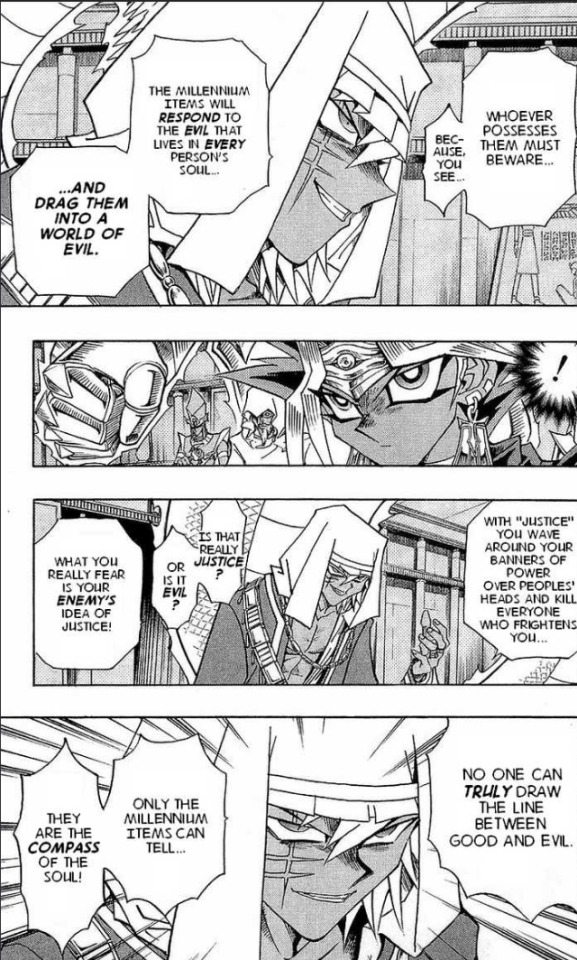
Like I said in my first analysis, what Bakura is saying here is that objective justice among men doesn't exist. As many others have pointed out, he's arguing that the monarchy has no ground to stand on to call him evil when they themselves have carried out egregious crimes against his village for the sake of the Items. And yes, he's totally correct about that.
But, hold on, Bakura – if there is no objective morality, then how can the Sennen Items make that calculation? Personally, I would argue, as I did earlier, that it's the strength of the convictions rather than the convictions themselves that are important here. If the Sennen Items are the product of both immense good and immense evil, and that's a dichotomy that metaphysically exists, then they must be operating relatively – that is, they determine "goodness" or "evilness" based on what the holder themselves believes, which makes sense given what we've seen earlier in the series. This would mean that the stronger the user's conviction is, the stronger their Ka becomes. In a way, then, the Items are themselves microcosms of the system Bakura is critiquing.
Here lies the issue for me, though – Bakura's main aim is revenge, and not revolution. He's not a liberator (he actively causes civilians harm solely to lure Atemu out), nor is he seeking to effect any positive change, since after he exacts his revenge his plan is to become Pharaoh himself and, with the aid of the Items, rule the world. I still hold that even though Bakura thinks the monarchy is wrong, he doesn't think he's right, either, even though he mocks the priests with that claim – it's just that he knows what he wants and he knows who he has to kill to get it. "No honour among thieves" is a phrase that comes to mind when I think about it; because he believes there is no real determinable divide between "good" and "evil," he'll do whatever it takes to achieve his goal – a goal that serves him and only him.
I think that makes him a fascinating character, and speaks to the complicated moral inquests this arc makes. But I don't think that Bakura's moral relativity makes him "right." Justified, yes, but right...not so much.
33 notes
·
View notes
Text
"...that will ultimately render the initiate a second Shiva.
To attain the state of Shiva (partly analogous to the state of Osiris-Ra) is to attain the state of gold reached through initiation (diksha) and alchemical transmutation (vedha). This path of one's immortalization consists in the generation of an immortal body, symbolized by the Osirian cultic body inside the mandala-like alchemical tomb which (being an icon of truth and righteousness, maat) served life, not death, and the construction of which (both in the architectural and the inner spiritual sense) was the goal of one's whole life, regarded as the royal path of gold-making.
The rites and techniques of this spiritual rasayana are ultimately based on the traditional metaphysical and cosmological doctrines. The Tantric universe, for example, is described as a rhythmical cosmic play between withdrawal (nivritti) and return (pravritti). This is like procession (proödos) and return (epistrophe) in Neoplatonism.
Therefore the yogic body (yoga indicating a binding connection or union) of the initiate is thought of as a microcosmic stage for God's (in the sense of Ishvara, like the personified Neoplatonic Nous) self-reversion and the re-interiorization of all his external cosmic projections. This path of return leads the initiate from images to their noetic archetypes. To say it another way, this is the descending and ascending path of kundalini, the miraculous power of both imprisoning and liberating Maya. The Serpent Kundalini in the Tantric mythology is analogous to the Hathorian 'serpent power, the fiery dunamis of the Paternal Intellect."
---"Philosophy & Theurgy in Late Antiquity"
Algis Uzdavinys
15 notes
·
View notes
Text
SPOILERS FOR THE MOON KNIGHT FINALE. DO NOT READ FURTHER IF YOU HAVE NOT YET WATCHED IT. THIS IS A BASIC OUTLINE OF THE VERSE FOR MAAT, @beingofchaos, and @knowerofsecretthings…
IF YOU HAVE WATCHED AND YOU ARE CURIOUS, CLICK THE READ MORE.
THANK YOU.


HISTORY
Just before the fall of Egypt, Maat at last reasoned with her uncle Apep (Apophis, by his Greek name), convincing him to stop his crusade against the deities, particularly as the younger ones were likely unaware of what had transpired prior to their origin, at least not the truth of it. She convinced him to approach the others with both herself and Djehuty (Thoth, by his Greek name) as witnesses to the truth of his tale as well as to his intentions at the time to simply be left to exist, without being harassed by their ill-informed efforts to eradicate chaos––something necessary to the balance of life.
Unfortunately, Aset (Isis, by her Greek name) refused to believe that Apep was in earnest and instead thought he sought some clever new way to bring the world to ruin, or perhaps an attempt to usurp the throne, taking it from her husband Asar (Osiris, by his Greek name). Clever being that she is, she convinced the others of this as well, swaying them to her side, and when matters turned poorly, it was clear that they meant to bind Apep once more. Maat would not see that happen, particularly as she had given her word to him, assuring him of safety. Thus, she and her uncle engaged in a battle, this time side by side, balance at last righted… though it would not be enough after centuries of discord and imbalance. Djehuty, not wishing to see Maat fall, likewise joined the fray, but the others were more powerful at their height.
The three were imprisoned in shabti… and it was not long after that Egypt fell and the mortals largely turned away from their ‘gods’, the deities deciding in turn to depart from the affairs of man.
It was prior to this that Khonshu became a moon deity, Djehuty passing that duty to him as he had far more important matters (such as the ever-evolving and changing languages of the world, as well as his duties as scribe to the deities and to the records of each soul to enter the Duat). Though they technically are both still considered to be moon gods, Djehuty all but relinquished the actual responsibilities to Khonshu, though still he can draw upon those abilities if given ample reason.
Apep was not new to being imprisoned, in whatever form it might take. Being chained within the Duat. Being bound to a shabti. Chaos can never be contained for any considerable duration, however, and it was not long before he escaped. It was in his wrath at a second betrayal and at the loss of his niece and brother that Egypt fell. Unfortunately, the other deities were clever and they hid away the shabti of Djehuty and of Maat. Unable to find them, Apep contented himself with continuing as he had for centuries, wreaking havoc upon the world, much to Khonshu’s dismay.
The two have tangled many times over the millennia, though always to a stalemate.
THE PRESENT
Now, where that leaves us during the events of the show.
Depending on whoever my partner might be while writing this, there is a potential slight shift to the actual progression of the last few episodes (largely whether or not they are able to aid in banishing Ammit), though the core of this idea remains the same and it is this:
After Khonshu is imprisoned, the gods are weakened enough by the use of power needed for such a task that Maat––goddess of justice and order who was unjustly imprisoned, goddess of balance when balance was to be completely and irreparably destroyed by Ammit’s aspirations––was able to break free at last and then to liberate Djehuty in turn. After years held captive and returning to a world of utter chaos left too long to the machinations of Apep without Order to balance him, and with the additional strain of freeing Djehuty, Maat is weakened but still able to maintain and to do what she must.
[ As an aside: the three of them never having left the earth––and that they are the oldest of the remaining deities, predating even the current ennead––they are not bound to taking avatars, though Djehuty has been known to do so from time to time for convenience sake, a "station” where he can direct specific “trains” of thought without entangling them with the many others that go through his head at any given point in time, allowing him to better keep focus on specific tasks. Apep and Maat never have, preferring their own forms (whatever form they might take), though it is also questionable if any would be able to be the avatar for Apep, an ‘anti-’deity considered to be one of the only all-powerful of the Egyptian deities, besides Ra. ]
Sensing the shift, Apep follows the thread that exists between himself and Maat, the tie between chaos and order, and he finds them, free of their prisons.
It takes Maat and Djehuty a moment to get their bearings, but if they are able, they would aid the avatar of Khonshu––Maat hopes with minimal squabbling between Khonshu and Apep though she is not hopeful––and bind Ammit once more before she destroys balance forever and the stakes are high as this would also likely destroy Maat forever.…
#|| out of cosmic order || { ooc }#|| a precarious balance between order and chaos || { v; moon knight }#// moon knight spoilers
5 notes
·
View notes
Link
0 notes
Text
Today we will talk about a list and names of the kings of ancient Egypt. The first dynasty ruled from about 3150 to 2890 BC. M. It is the first dynasty of Egyptian kings who ruled Egypt after its unification (Upper and Lower Egypt) by Narmer, who ruled after him eight kings, the most famous of whom were (Hor Aha), (Jar) and (Jet), and Queen (Merit Nate), who is the first ruling queen in ancient history , and represents the beginning of the Egyptian historical eras.
The fourth was in Sudan, and Thebes (today called Luxor) was the capital of this empire, and there the greatest temples and the most magnificent tombs were built. This was followed by the era of the third decline, and it includes families 21-25 (about 1085-663 BC), in which kings of Libyan origin ruled the country, including Sheshonq, Yokuris, and others of Nubian origin, the most famous of whom was Yankhi. As the Assyrians invaded, the Egyptians revolted and liberated the country from their control under the leadership of Psamtik I, who founded the 26th Dynasty (about 663 - 529 BC) and returned Egypt to its strength and the Renaissance began. Then the Persians took over the country and some powerful personalities succeeded in expelling them, but they returned throughout the 27 Dynasties. 30. The history of the pharaohs ended when Alexander the Great invaded Egypt and expelled the Persians in 332 BC. And then it was ruled by the Greek pharaohs of the Ptolemaic dynasty. The rule of this family ended when Egypt became an independent Roman province in 30 BC.[1]
The dates provided in this listing are approximate. They are based primarily on the traditional chronology of ancient Egypt, mostly based on the Egypt Digital Universities Database [2] developed by the Petrie Museum of Egyptian Antiquities, but alternative dates taken from other sources can be noted separately......
Kings names.
👇
Ptolemy IV
Ptolemy VII
Emperor Trajan
Emperor Tiberius Caesar
Emperor Caracalla
The names of the ancient Egyptian pharaohs
Pharaonic queens of Egypt
Queen Hatshepsut
Queen Ahmose-Nefertari
Queen Nefertiti
Queen Nefertari
Queen T
Queen Tuya
Queen Twosret
Queen Cleopatra
Queen Ahmose Enhaby
Queen Meritamun
Princess Neferure
Egyptian pharaohs
Minister we will die
Architect Imhotep
Engineer Habu
Engineer Ham Iono
Binozem I
King Ptolemy VI
King Ramses X
King Amenhotep III
King Amenhotep II
King Ramses XI
King Ahmose I
King Amenhotep the First
King Userkaf
King Unas
King i
King Harihor
King Nectanebo II
King Nectanebo I
King Taharqa
King Mentuhotep I
King Mentuhotep II
(The secret of Maat-Ra) (Mary-Amun)
King Ramesses V (User Maatre) (Sakhr En Ra)
King Ramesses VI (Neb Maatre) (Mari Amen)
King Ramses VII (User Ma'at Ra) (Mari Amen)
King Ramesses VIII (User Maatre) (Brother to Believe)
King Ramesses IX (Neferkare) (Step en Ra)
King Sekhnakht (Merre Ra) (Wsu-Kheu Ra) (Step En Ra)
King Ramses X (News of Maat Ra) (Step En Ra)
King Ramses XI (of Maat-Re) (Step-En-Ptah)
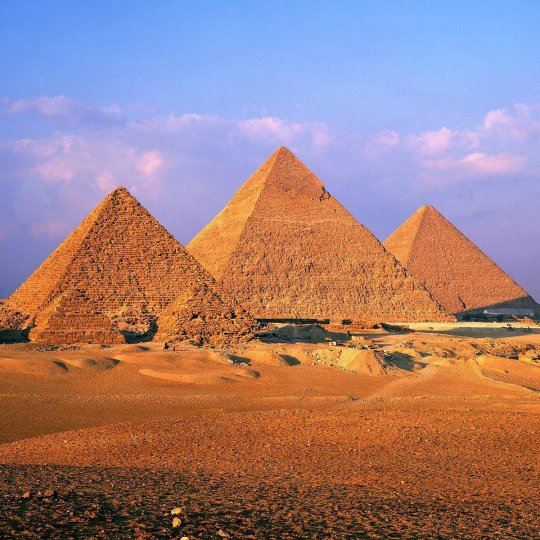
0 notes
Text

N'Aton Tarot, channeled & painted by Nema
0 notes
Text
“Here we can go further than Polanyi to suggest that the triumph of liberalism more and more brings about the ‘war of all against all’ (Hobbes) and the idea of man as self-proprietary animal (Locke) that were its presuppositions. But this does not thereby prove those presuppositions, because it is only really existing liberalism that has produced in practice the circumstances which it originally assumed in theory. Just as liberal thought redefined human nature as isolated individuals who enter into formal contractual ties with other individuals (instead of the ancient and Christian idea of social, political animals), so too liberal practice has replaced the quest for reciprocal recognition and mutual flourishing with the pursuit of wealth, power, and pleasure.
And since in theory and practice liberalism goes against the grain of humanity and the universe we inhabit, we are facing not merely a cyclical crisis (linked, for example, to economic boom and bust or the decline of representative government), nor even just a systemic crisis of capitalism and democracy, but rather a meta-crisis. The meta-crisis of liberalism is the tendency at once to abstract from reality and to reduce everything to its bare materiality, leaving an irreducible aporia between human will and artifice, on the one hand, and unalterable laws of nature and history, on the other.”
The Downward Spiral, John Milbank
#liberalism#maat#ma’at#politics#republican#democrat#for context: republicans and democrats are both types of liberals
3 notes
·
View notes
Text
A Relaxing Bath With Corpse Headcanons
Corpse Husband x Reader (Gender Neutral)
Warnings: None
Genre: ABSOLUTE FLUFF
Requested by Anon. Hi dear! I’m so sorry it’s taken me so long to post your request but here it finally is! Sorry that it’s also not a full fic but just headcanons, but I still hope you enjoy! Love, Vy ❤
- Being the never-at-home busybody that you are, you and Corpse rarely have time to spend together, just the two of us with no responsibilities hindering you from giving one another your full undivided attention
- The little time you do get to spend in such a carefree and liberating way is always the highlight of your day/week
- You milk every second of it, filling it to the brim with fun and small significant and meaningful moments
- It could be venturing into the great outdoors or staying in, watching a movie or, as it is the case in this instance, taking a long relaxing bath together
- You are a very big bath person and Corpse used to simply humor you at the start but then started willingly and enthusiastically indulging in the pastime, becoming a target of your mocking for a brief period
- Taking a bath to you is an art form
- One you had to teach Corpse cause you couldn’t stand how simplistic and minimalistic a bath seemed in his visions of it
- You introduced him to the world of bath bombs and their many different verities
- Needless to say, he was mesmerized
- Ever since that great discovery, he’s become the one to pick the bath bombs and scented candles for when the two of you choose to take a long relaxing bath especially after a seemingly endless and tiring day
- If you were considered a scholar at the art of bath bombs, he’s most certainly a graduated prodigy
- He knows which ones would serve well for which occasions and moods
- Which to use at what temperature and so on
- To say you’re impressed would be an understatement
- When you’re in the bath however, it’s not uncommon for one of you to fall asleep as you talk about your day
- Basically, it’s therapy but cheaper and more effective
@maat-the-prescriptive @simonsbluee @save-the-sky @itsminniekat @hacker-ghost @bi-andready-tocry @imtiredaffff @jazzkaurtheglorious @hereforbeebo @fandomgirl17 @chrysanthykios @maehemscorpyus @loraleiix @letsloveimagines @annshit @i-cant-choose-a-username-help @enigmaticmaze @divine-artemis @waterlilypat @idontknowwhatthisisfam @evi-ka @classyandfabulous00 @redperson58 @lilysdaydreams @solowheein @mythicalamphitrite @axen-gers @luckygirl144 @nj01 @buddyemily @the-albino-lioness @stardream14 @gdhdkfnn @nomadicgypsyy @preciousskye @fluffysuicideunicornsworld @o-kaelin @manacharlotte @awkward-youtube-trash @lolalee24 @bonky-beerns @meme-lord-and-savior-sebastian @strawbrinkofdeath @teenloves @tams0527 @browneyespinkhair @starstruckllamapuppy @daisychains012 @y0ulooked @tinytacosuitcaseflap @supernatural-is-my-only-life @jula-pauline @melodykitty @just-that-bi-girl @crazybutconfidentaf @lowellshade @alphakees @bellero @weallneednamjesus @starryhanji @boiled-onionrings @husherstan @fockingwhore @melaningoddessthings @prettypastelpetals @haleypearce @godwhyamiawkward @y-napotat @daisychainyoonmin @little-miss-rebel3 @free-wheelin-bi-sexual @redmoon261 @darkacademic2 @wiseflamingoqueen @into-the-end @namikhai-i @nastiablr @thelittleplantlover @mirktuan @dont-hyuck @jjk-bunny @vintagegothlover @easygoingtheatre @itsrandombooklover @miiaivi @emmybaybee @befourgolden @jjk-is-my-shit @eternalteaaars @spacebadgerx @princesslunalight @acequinn14 @samm48 @misselsbells06 @simp-lykawa @fo-love @marishimomura-blog @therealglenncoco @cinnamonbun332 @killtherandomness @sanshinexxxsan @fee-btheweeb @press-lay @cathleenpotgieter16 @jazzydoesstuff @moonlxghtbay @forestrain2000 @hyunjinhugs @blood-of-fandoms @lovellylies @ukiyolixx @simpforhpcharacters @chrisdylan17 @parkerjisung @pedernille @theodonyous @wineandionysus @malfoystilinskii05 @morbid-x @coryisagee @jessewa26 @scoobydooluver97 @mindintheskies365 @raeanneinwonderland @indecisive-empanada @gluttonypalace @loriane2503 @btsiguess-kpop @khaoticbunny @lucidlycactus @smiithys @rottenroyalebooks @kpopgirlbtssvt @fangirl-tc27 @fr0z3n-1 @notmesimpingfortechno @shotarosleftpinky @kunoi-chan @idk-whats-wrong-with-me @yikeroonie @goldenstarofthunderclan @poetry-and-tea @ama-do-writing-stuff @wishbonewolf @emeraldxhope @t0xick1tty @kusuinko @speakyourselfloveyourself @sophia902103 @lo-manburg @classsykittykat @dmgama @depressedpuppythatneedscoffee @btsiguess-kpop @akaashi-baby @gun-jong-simp @geschichtenfee @yerapotato-wp @browneyedgirl365 @thysagclub @sparklycloudnight @helloatomicshadow @queentorresstuff @vtte @val-gal @lucy-bunny17 @aaliyahh0 @katluckybear @boyleanti @straybids @franchesca-791 @cosmicstorm19 @averyisbackinthetrashcan @aomi-nabi @xlanawriter @allensimpsforcorpse
#corpse husband#corpse#corpse fanfic#corpse fluff#corpse fic#corpse fanfiction#corpse fandom#corpse x y/n#corpse x reader#corpse x you#corpse imagine#corpse imagines#corpse husband x y/n#corpse husband fanfic#corpse husband fanficiton#corpse husband x reader#corpse headcanons#corpse husband imagine#corpse simp#headcanons#fic#fanfic#fanfiction#fandom#requests open#request#x reader#reader
269 notes
·
View notes
Video
youtube
To Be Black, Speak You Maat: Global Afrikan Liberation | Ending Neoliberalism
14 notes
·
View notes
Text
"Long before our era, the cowry shell was used as a means of payment and regarded as a symbol of wealth and power. This monetary usage continued until the 20th century."
In fact, the dumbest of our people were selling millions into slavery in exchange for these relatively worthless (to the rest of the world) shells. Worthless...
So---understand--- you can give value to anything. Like gold and silver. Like Air Jordan's. Like crack cocaine. Like frying your hair to look like enslavers. And you can also devalue it to nothing. Carefully appreciate this...
Just think what will happen when all of these technically trained Blacks who are going to their graves with professional degrees and licenses in medicine, architecture, construction engineering, manufacturing, computer engineering, agricultural science, law, educational administration, surgery, military science, solar energy, telephone engineering, etc., decide to write down all that they know in "how to do books" for our children.
If you really valued the next generation's liberation and self-determination. Please help them learn how things are done...so they can stand on their own two feet in their own nation. ~Tdka Maat Kilimanjaro
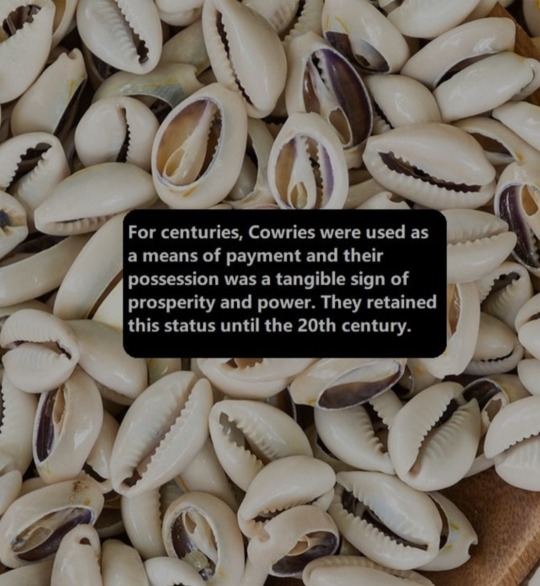
10 notes
·
View notes
Text
Genshin gods and their connection to demonology and mythology
I’m no expert on demonology nor mythology, simply someone that enjoys both and the connection between them and Genshin Impact. I think that Mihoyo did a splendid job on the choices they made when deciding which demons in The Lesser Key of Solomon to use. Anyways, I hope that you enjoy.
Barbatos

Barbatos in demonology is one of the earls of hell, ruling thirty legions of demons and has four kings as his companions to command his legions. His name seems to derive from Latin 'barbatus', bearded, old man, philosopher. He is the 8th demon in The Lesser Key of Solomon, while Pseudomonarchia Daemonum listed him as the 6th demon.
So far it does not really have anything to do with Genshin, except maybe the fact that Barbatos refers to Morax as old man when his name means old man, so that’s a little ironic.
Barbatos is very known for his command over archery, which is why Barbatos in Genshin uses a bow.
Alright, here is the fun part, Barbatos, unlike some of the other demons in The Lesser Key of Solomon, doesn’t have anything to do with foreign gods. Foreign gods in this case refers to gods not belonging to the Abrahamic religions.
In fact, Barbatos is a fallen angel and was once of the order of the virtues of heaven. This is a delicious piece of irony, given that Barbatos’ godly form greatly resembles an angel.
Barbatos takes upon the name ‘Venti’ as a mortal. The name Venti is most likely Latin instead of Italian. Venti in Latin means wind, and can either refer to the entirety of the four wind gods that serve Aiolos, the Roman Lord of the Winds, whose Greek counterpart is Aeolus or a specific type of wind spirit in Roman mythology, whose Greek counterpart is known as Anemoi Thuellai. The wind spirits are violent storm winds, sons of the monstrous hurricane-giant Typhoeus and were kept locked up in Aiolos’ floating fortress.
The four wind gods that served Aiolos are Aquilo, the north wind, Favonius, the west wind, Notus, the south wind, and Vulturnus, the east wind. Their greek counterparts are Boreas, Zephyrus, Notus and Eurus respectively. I brought this up because of the Knights of Favonius.
Another of the four winds gods appear in Genshin, although this time with a Greek name. Andrius, the Wolf of the North, is also known as Lupus Boreas. Lupus is the Latin term for wolf while Boreas, as stated above, is the Greek god of the north wind. In conclusion, the name Lupus Boreas itself more or less means Wolf of the North.
Morax

Morax in demonology is one of the presidents of hell, ruling thirty legions of demons. His name seems to come from Latin 'morax', that delays, that stops. He is the 21st demon in The Lesser Key of Solomon.
So far, similarly to Barbatos, the only thing that has anything to do with Genshin is his name, mostly because rock is the most likely to be able to endure time.
Morax appears as a great bull with the face of a man, which is interesting in a Chinese context, as Liyue is based on Ancient China. In the Chinese zodiac, an ox has a fixed element, which is earth. The Chinese zodiac sign Ox is disciplined and orderly in his or her thoughts and actions. They are known for the strength of body, mind, and character, and tend to be very conservative. They do well in business, not because of ingenious inventions or clever self-promotion, but by hard work and long hours. Sometimes considered old-fashioned, Chinese Oxen are well-known for their moral fiber. They live by a code that may no longer be popular, but they have a clear sense of what is right and wrong. While others may see them as slow and plodding, inside, they are romantics who want to look at the world as it once was (or at least how they know it was).
This makes the ox a very fitting animal for the Morax we know in Genshin.
Furthermore, another belief for his name is the Egyptian goddess Maat, the goddess of truth, balance, order, harmony, law, morality, and justice. This makes it fitting for the Morax in Genshin in my opinion.
Alright, back to demonology, Morax teaches Astronomy and all other liberal sciences, and gives good and wise familiars that know the virtues of all herbs and precious stones. The precious stones part is fitting for the Morax in Genshin but also the fact that Morax in demonology likes to teach, just like the Morax in Genshin.
Morax descends upon Liyue as a dragon. Dragons in East Asian mythology is commonly associated with good luck, propitiousness, power, and nobleness. In ancient times, only emperors were allowed to use a dragon as a symbol. This is probably used to further reaffirm Morax’s position as the highest of the adepti. The colours used in Morax’s dragon form are simple, brown for the earth and gold for the gold that flows in his veins. Even if he did not create Mora, it is typically said that immortals bleed gold, which is commonly known as ichor.
“The Dragon is believed by the Chinese to present power and valiancy, excellence and determination, dignity and divinity. A dragon is believed to have the powers to overcome obstacles to see success. He is spirited, confident, enthusiastic, intelligent and determined.”
As a mortal, Morax takes the name ‘Zhongli’. Chinese names are a bit more difficult to decipher, compared to Latin names since they depend more of the characters used to make up the name as compared to just the sound of the name. Different characters in Chinese could make the exact same sound but mean very different things. Zhongli’s name in Chinese characters is 钟离, the Zhong in his name means clock while the Li in his name means leave. A interpretation of his name would be off the clock, symbolising his retirement.
His name is likely from a figure in Chinese mythology, 锺离权, Zhongli Quan, one of the Baxian, the Eight Immortals of Daoism. Zhongli Quan is also sometimes known as , 汉锺离, Han Zhongli because he is said to have lived during the Han dynasty. In legend, he wields a large fan which can resurrect the dead and transform stones into silver or gold. The Zhong in his name is actually the same Zhong used in Genshin’s Zhong but in traditional Chinese as opposed to the simplified Chinese used in Genshin.
Baal

Baal in demonology is a Duke of Hell, with 66 legions of demons under his command. His name comes from a Canaan and Mesopotamian god, specifically the god of fertility and storms. The Semitic word Baal means lord or master, and the ancient people believed he was in charge of all of nature and humans. He is the 1st demon in The Lesser Key of Solomon.
Baal in Genshin forms herself as a ruler or lord and master of Inazuma. Unlike Barbatos, who is mostly absent or Morax, who descends once a year, Baal seems to be a god that rules with an iron fist, appropriate for someone whose name means lord or master.
Baal in Genshin claims that her ideal is "nearest unto Heaven," calls her body the "noblest and most eminent of all in this world," and sees her reign as eternal which is again, fitting for someone whose name means lord and master.
Baal in demonology is also commonly associated with Satan or at least as his primary assistant. The arrogance shown in Baal in Genshin is therefore fitting, given that Satan was once Lucifer, the most perfect of angels before he rebelled against God and fell to heaven. He too believed that his ideal was the nearest unto Heaven and that his body is the noblest and most eminent of all in this world. Another interesting factor is that Baal in Genshin believes that humans are not deserving of visions, similar to Satan’s reason for his rebellion against God, for he believed that humans did not deserve God’s love or protection.
Baal as a god was believed to be the "giver of life" and mankind was dependent upon him for providing what was necessary to sustain the farms, flocks and herds. Baal was the god of fertility and storms, it is fitting as storms meant lighting and therefore electricity. In Ugaritic and Hebrew, Baal’s epithet as the storm god was He Who Rides on the Clouds.
The question on how a powerful ruling god, similar to Zeus in Greek mythology, became known as a demon is fairly simple.
“According to the Old Testament, after the Israelites wandered in the desert for 40 years, they arrived in the fruitful land of Canaan where the prime deity was Baal. Before they entered the Promised Land, the Hebrew people were warned not to worship the pagan gods of Canaan. However, after wandering in the desert for all that time, they weren’t quite sure that their god was the right choice since the Canaanites were living it up on the fertile soil. Many split their allegiance and decided to worship both their god and Baal.”
Many pagan gods were demonised by the Abrahamic religions as the Abrahamic religions did not allow worship of gods that weren't their God. They called it idolatry and deemed it a sin.
Baal’s primary prophet was Jezebel, if you are not familiar with the Abrahamic religions, she is symbolically associated with false prophets. The original Jezebel instituted the worship of Baal and Asherah on a national scale and violently purged the prophets of Yahweh from Israel. Through the centuries, the name Jezebel came to be associated with false prophets. By the early 20th century, it was also associated with fallen or abandoned women. In Christian lore, a comparison to Jezebel suggested that a person was a pagan or an apostate masquerading as a servant of God. By manipulation and seduction, she misled the saints of God into sins of idolatry and sexual immorality. In particular, Christians associated Jezebel with promiscuity. The cosmetics which Jezebel applied before her death also led some Christians to associate makeup with vice.
Personally, given that the records of Jezebel are mostly from Abrahamic religions, I would advise that it be taken with a spoonful of salt. I mentioned Jezebel because she was said to have violently purged the prophets of Yahweh from Israel, similar to how Baal in Genshin purged the vision holders in Inazuma.
#genshin impact#genshin#genshin zhongli#zhongli#genshin morax#genshin venti#genshin barbatos#morax#genshin impact morax#morax genshin impact#morax genshin#venti#barbatos#zhongli genshin impact#zhongli genshin#genshin impact zhongli#genshin impact venti#genshin impact barbatos#venti genshin impact#venti genshin#barbatos genshin impact#barbatos genshin#genshin impact baal#genshin baal#baal#baal genshin impact#baal genshin
158 notes
·
View notes